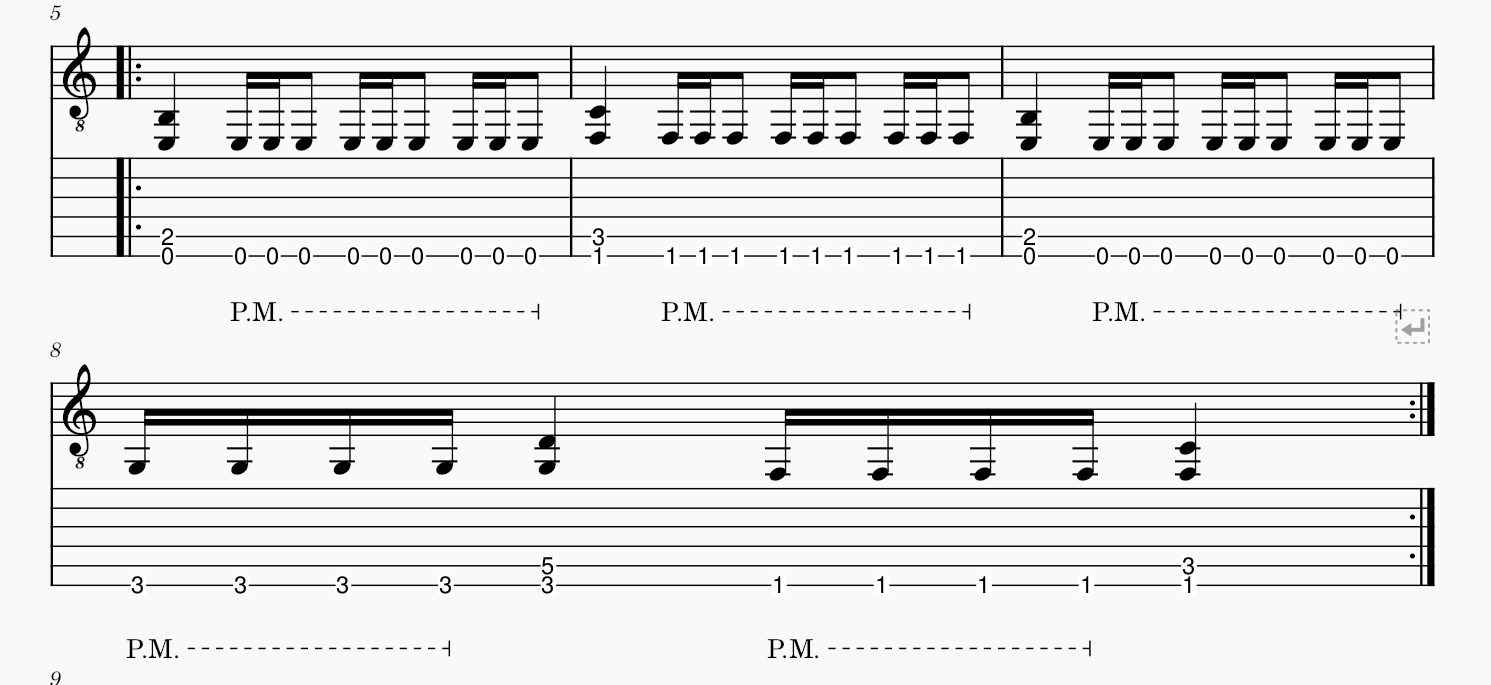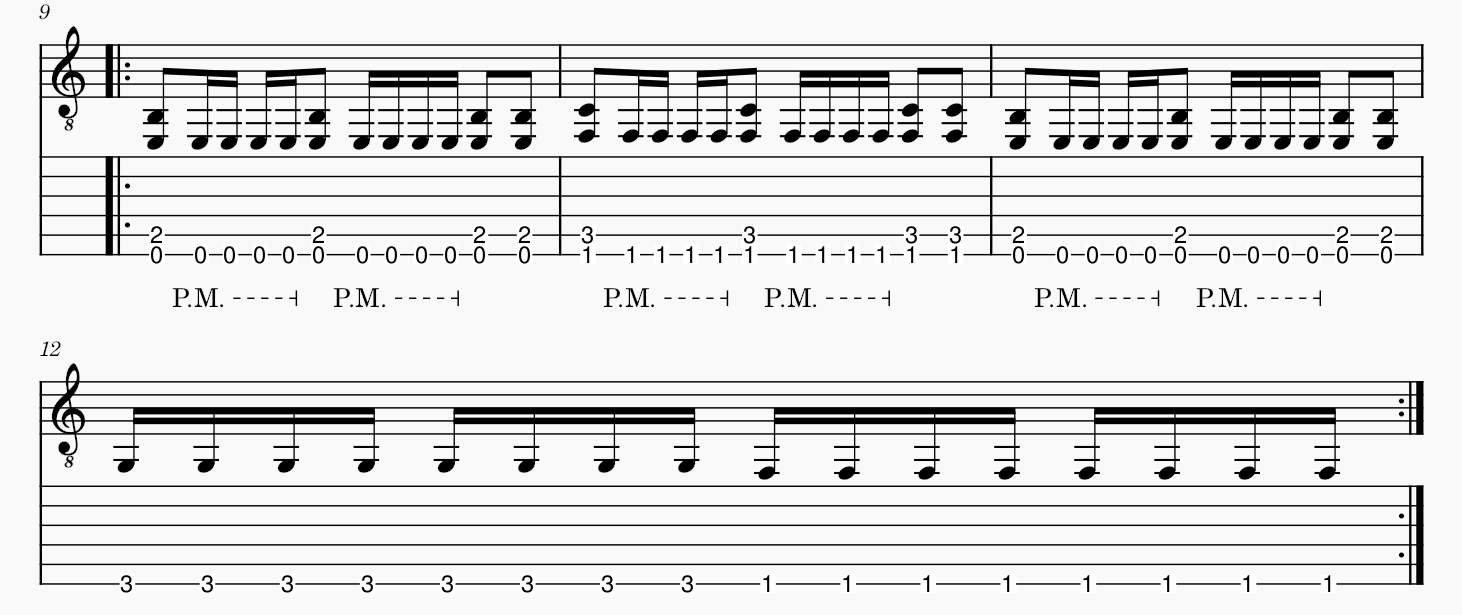Essential Thrash Rhythm Patterns For Atmosphere, Speed, & Aggression
Aug 03, 2024Riffs are what distinguish guitar-driven genres from others. You can play a chord progression and it could be one of a million different songs. However, once you turn those chords into a riff, that’s what makes a song individually recognizable. The melodic structure of a chord progression plus rhythmic variation gives you something that sounds more like a riff. Rhythmic delivery is a huge part of what distinguishes chord progressions from riffs. When you’re playing thrash metal in particular, there are essential rhythms that characterize the genre’s speed and aggression. In this lesson, I’m gonna show you some essential thrash rhythm ideas that you can use in any chord progression to give yourself ideas on how to create memorable riffs.
Pattern 1: Ring Out Ominous Power Chords
All patterns in this lesson are depicted using tabs and sheet music. If you are interested in learning more about reading sheet music for thrash metal, check out my lesson on how to get started with it. You may also be interested in my lesson on the different ways guitarists read music.
To warm up and get familiar with the power chord progression, reference the tab below. Start with whole notes that are used for most of the riff. The last measure, however, uses two power chords held for half note durations. Ringing out carefully selected dyads in this fashion can give you a haunting, ominous feeling. While it doesn't rely solely on power chords, the song "Bloodline" by Slayer showcases this effect nicely.

Pattern 2: Galloping Thrash Riffage
In this next example, we are going to speed things up by using a lot of galloping patterns often seen in thrash. The galloping rhythms are depicted by two sixteenth notes connected to an eighth note. See the tab below and note where palm muting occurs.
Pattern 3: Advanced Speed Picking
Now we get to really speed things up. Once you've mastered Pattern 2 in this lesson, you are prepared to tackle Pattern 3 depicted below. The last measure requires steady tremolo picking to play it up to speed.

Conclusion
As you can see, a single chord progression can be played in numerous different ways. In this case, I showed you how a chord progression can be used in different ways to showcase dynamics in a thrash metal context. The rhythms used in each example illustrate essential thrash techniques and patterns. Feel free to use different chords to play the rhythms demonstrated in this lesson to come up with riffs that have different flavors. You could also combine rhythms and create entirely different riffs and rhythm patterns of your own. Have fun exploring the endless ways to develop a riff!
Watch the full lesson here: Essential Thrash Rhythm Patterns For Atmosphere, Speed, & Aggression
Optimize your practice routine in 5 minutes with my simple, powerful, scientifically driven tool for guitarists.


